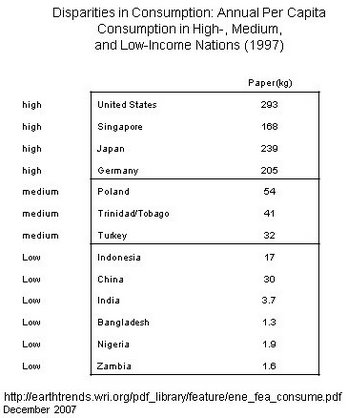World population is expected to increase by over one billion people by 2020. (World Bank 2007). Developed countries such as the United States of America have higher per capita consumption of goods. On some goods consumption in developed countries can be nine times higher than developing countries (Earth trends 2007). Forest production is one of the goods that United States consumes in high quantities. Canada, and specifically Alberta, has historically been significant source for Forest products for the United States. Alberta exports 76 % of forest products to the United States (The State of Canada’s Forest 2006). therefore a significant economic market for Alberta.

Available
timber supply to feed expected demand in predicted to be under pressure
for a number of reasons which include, but are not limited to, land
withdrawals for both conservation and increased industrial development.
(Schneider et al 2003). In addition, some regions in Alberta currently
have over mature growing stock that is not accessible for use under
even flow harvest constraints; therefore commercial value will be lost
as these stands age. This will create a period of time during growth
cycle of timber crop where available timber will be scare. There is also uncertainty as to what effects, either positive or negative, that climate change might have on timber resources.
One Strategy for both economic and conservation benefits, while at the same time managing the risk Climate Change poses, is a rigorous Tree improvement Program. The best return on a tree improvement programs is achieved with the highest yields in the shortest period of time. Within Alberta the tree best adapted to local climate, which has fast growth rate, as well as having attributes suitable for tree improvement such as: breeding, hybridization, and clone ability, is Aspen (Peterson & Peterson 1992).
Principles of Tree improvement are well document in various text books such as Zobel and Talber (1991), Writer (1976), and Namogkko(1988). As well tree improvement has been used around the world. Most notable is the success with Eucalyptus where numbers of hectares in cultivation have gone from a total of 1.2 million in 1990 to an annually rate in 2006 of 10 million hectares per year (need reference). Progress in Canada has not been significant with respect to improvement of trees used in plantations, however the principles used have been at the core of Canadian economic as social success. Charles Saundaer’s work with wheat at the turn of the 20th century to develop the marquees variety of wheat from hybrid varieties sourced from India allowed for fewer growing days crop ripening. The newly created wheat was instrumental in opening up the settlement of the prairie provinces (read more about Charles Sanders on this government web site). Principles of breeding testing and verification within tree improvement, to gain a more usable volume of wood per hectare of forest, are the same as those used by Charles Saunders to reduce the number of days for Wheat to ripen.